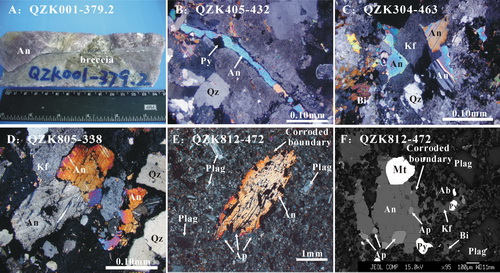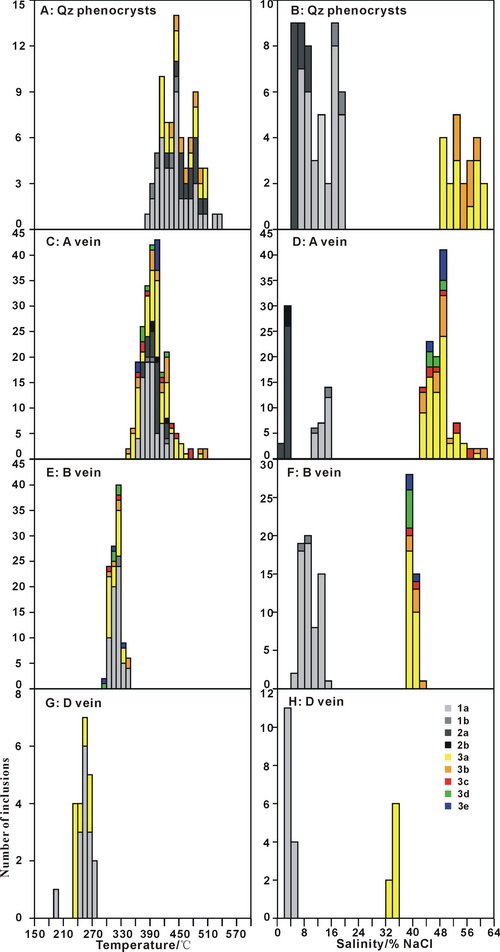Highly Oxidized Magma and Fluid Evolution of Miocene Qulong Giant Porphyry Cu-Mo Deposit, Southern TibetUpdate time:07 11, 2012
Ph.D. student XIAO Bo and his teacher QIN Kezhang research geological and mineralogical features of the Qulong deposit, as well as the result of fluid inclusion microthermometry, in order to reveal the nature of the highly oxidized, S-rich ore-forming magma-hydrothermal system. These observations indicate that the Qulong magmahydrothermal system was highly oxidized and sulfur-rich. In this study, they confirm a highly oxidized, sulfur-rich magma-hydrothermal system in the Gangdese orogenic setting, which is assumed to be a non-subduction setting.
Fig. 1 Photographs, microphotographs and back-scattered electronic (BSE) images of anhydrite in the Qulong deposit. (Image by XIAO)
Fig. 2 Salinity versus final homogenization temperature (to liquid or by halite melting) for all inclusions of the Qulong porphyry Cu–Mo deposit. (Image by XIAO) Xiao et al. Highly Oxidized Magma and Fluid Evolution of Miocene Qulong Giant Porphyry Cu-Mo Deposit, Southern Tibet, China.Resource Geology. 2012, 62: 4-18(Download Here)
|
Contact
Related Articles
Reference
|
-
SIMSSecondary Ion Mass Spectrometer Laboratory
-
MC-ICPMSMultiple-collector ICPMS Laboratory
-
EM & TEMElectron Microprobe and Transmission Electron Microscope Laboratory
-
SISolid Isotope Laboratory
-
StIStable Isotope Laboratory
-
RMPARock-Mineral Preparation and Analysis
-
AAH40Ar/39Ar & (U-Th)/He Laboratory
-
EMLElectron Microscopy Laboratory
-
USCLUranium Series Chronology Laboratory
-
SASeismic Array Laboratory
-
SEELaboratory of Space Environment Exploration Laboratory
-
PGPaleomagnetism and Geochronology Laboratory
-
BioMNSFrance-China Bio-mineralization and Nano-structure Laboratory

 Print
Print Close
Close

